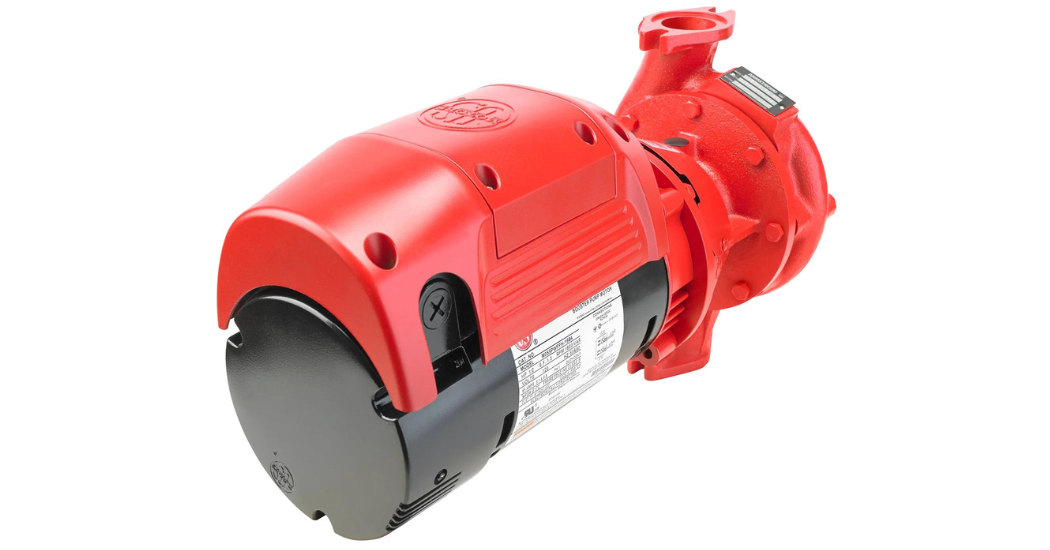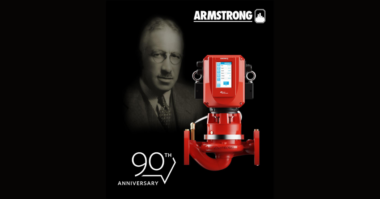What is a circulator pump used for? What is the purpose of a circulator?
In a hydronic heating system, hot water is moved from the heat source (the boiler), through a pipe to a radiator, where the convective qualities of the radiator allow the heat to rise from the hotter radiator to the colder air in the room.
To move the heat from the source to where it is distributed, a circulating pump, or ‘circulator’ generates the pressure and flow to move the water from the boiler to the radiator.
To move the heat from the source to where it is distributed, a circulating pump, or ‘circulator’ generates the pressure and flow to move the water from the boiler to the radiator.
What is a circulator and how does it work?
Most small circulators use a reliable design that consists of an electric motor, coupled to an impeller that is housed within a volute casing. The rotation of the impeller pulls the water into the inlet side of the casing. The vanes of the impeller, push the water out to the volute and the outlet port of the casing.
What is the difference between a pump and a circulator?
The term circulator is generally used to refer to a small device that is installed in a closed system of fluid in residential and light commercial applications. The circulator, and the motor that drives it, do not have to work very hard to move the water within the system, because there is no requirement to overcome the effects of gravity.
Although there are exceptions, the term pump is generally used to refer to a larger device that moves larger quantities of water, in larger commercial piping systems that can be either open or closed.
What are the different types of circulator?
Wet Rotor versus Dry Rotor
Wet Rotor – In a Wet Rotor circulator design, the whole rotor, including the motor rotor, is immersed in the pumped fluid, which acts as a coolant for the motor. These circulators often use a 2-piece design and are not built with the intention of service and maintenance. Being water cooled, wet rotor motors do not require an air-cooling fan. As a result, they operate more quietly than other designs.
Dry Rotor – In a Dry Rotor circulator pump, the motor rotor does not come into contact with the fluid. Dry rotor designs are repairable and can have a very long operating life. The motors are air-cooled, using a fan on the end of the motor shaft.
Standard Induction Motor versus Electronically Commutated (ECM) Motor
A Permanent Split Capacitor (PSC) induction motor, is the most common design. It relies on a single phase alternating current (AC) in the stator winding to create a rotating magnetic field which induces eddy currents in the motor rotor. These induced currents in turn create a magnetic field in the rotor which interacts with the stator field, causing the rotor shaft to turn the impeller. The capacitor is used to store electrical charge to give the motor an initial starting torque.
Electronically Commutated (ECM) motors also use single phase AC supply, but the electronics change the current to DC and then send pulses of positive and negative DC current to selected electromagnetic coils in the stator, positioned around the rotor, which itself is fitted with permanent magnets. The coils, depending on how they are charged, either push the shaft away or pull the shaft toward them, causing it to turn. The motor’s operation is controlled by software, which has the flexibility to operate at any speed within a range of RPM, and to vary the speed based on logical inputs.
Single Speed versus 3-Speed versus Variable Speed
Single (Fixed) Speed circulators use standard induction motors. The motor operates at a single speed and the circulator operates at a flow/head duty point. The resistance created by the water in the piping loop can be plotted as a curve. The characteristics of the circulator, including the performance of the motor, create pressure values that can also be used to plot a curve. A single speed pump or circulator will operate where the two curves intersect. Adjustment of flow rate can be achieved by restricting mechanical valves.
3 speed circulators use induction motors with special stator windings, and allow a user or installer or contractor to control the speed using a simple three-way switch that allows more or less electricity to flow to the motor. The choice of three settings gives contractors some flexibility in circulator output. Any further customization of flow rates can be achieved with mechanical valves.
Variable Speed circulators typically use ECM motors, and speed modulation is controlled by adjusting their user interface or sometimes by an external control signal.
Individual answers sometimes need a conversation. Talk with one of Armstrong FT’s product experts to get answers to your questions on circulators.
| Comparison point | Permanent Split Capacitor (PSC) Motors | Electronically Commutated Motors (ECM) |
| Customer value | Reliable, simple, flexible & low cost | Reliable, flexible, optimum performance |
| Speed control capability | Single speed, or mechanical speed setting | Variable speed |
| Capacity for programming | No | Yes |
| Electrical supply | Single phase alternating current (AC) | Single phase alternating current (AC) |
| Motor design | Stator and rotor, induction type, capacitor start | Permanent magnets in shaft with a series of DC windings around rotor; microprocessor |
| Noise levels | Medium | Low |





Comments